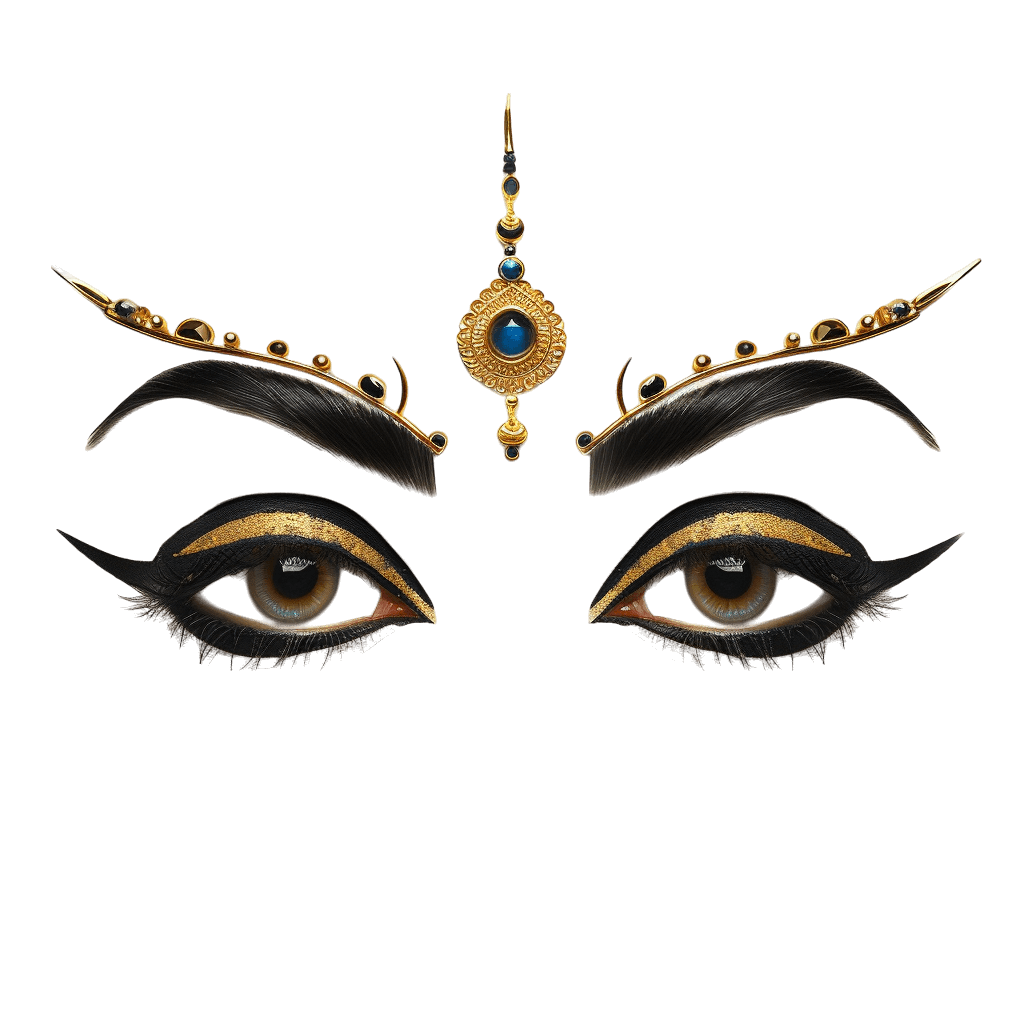Exploring The World Of Bindi: Culture, Significance, And Fashion
Bindi is more than just a decorative symbol; it represents centuries of cultural heritage, spirituality, and identity in South Asian traditions. Originating in India, this small dot placed on the forehead has evolved from a sacred emblem to a global fashion statement. Today, it is embraced by people worldwide, transcending cultural boundaries while maintaining its deep-rooted significance.
Throughout history, the bindi has been associated with religious practices, marital status, and social identity. It is not merely an accessory but a reflection of personal beliefs, traditions, and artistic expression. In this article, we will delve into the origins, meanings, and modern interpretations of the bindi, exploring how it continues to captivate people across the globe.
This comprehensive guide will cover everything you need to know about bindi, from its historical roots to its contemporary relevance. Whether you're curious about its cultural importance or interested in incorporating it into your style, this article will provide valuable insights and practical tips.
Read also:Maricar Reyes Leaked The Truth Behind The Controversy
Table of Contents
- The Rich History of Bindi
- Cultural Significance and Symbolism
- Types of Bindi
- How to Apply Bindi
- Modern Trends and Fashion
- Religious Connection and Practices
- Bindi as a Symbol of Marriage
- Global Influence and Cultural Exchange
- Controversies Surrounding the Bindi
- Care Tips for Maintaining Bindi
The Rich History of Bindi
The origins of the bindi can be traced back thousands of years to ancient India, where it was first mentioned in Vedic texts. Initially, the bindi was used as a mark of spiritual awakening and self-realization. Over time, it became a symbol of marital status, with married women adorning their foreheads with a red dot to signify their union.
Historically, the bindi was made using natural materials such as sindoor (vermilion powder), sandalwood paste, or kumkum. These materials were believed to have healing properties and were often used in religious rituals. As civilizations evolved, the design and materials of the bindi diversified, reflecting the cultural and regional variations across India.
Evolution of Bindi Through the Ages
From the ancient Vedic period to the modern era, the bindi has undergone significant transformations. During the Mughal era, intricate designs and embellishments were introduced, making the bindi an integral part of royal attire. Today, bindis are available in various shapes, sizes, and materials, catering to diverse preferences and occasions.
Cultural Significance and Symbolism
Bindi holds immense cultural significance in South Asian societies. It is not just a decorative item but a symbol of spirituality, femininity, and identity. In Hinduism, the bindi is believed to enhance the wearer's sixth sense and protect them from negative energies. Its placement on the forehead corresponds to the Ajna chakra, the center of intuition and wisdom.
For married women, the bindi serves as a marker of their marital status and devotion to their spouse. The red color, which is traditionally associated with love, passion, and prosperity, symbolizes the blessings and responsibilities of married life.
Regional Variations in Bindi Usage
Across India, different regions have unique traditions and styles of bindi. In North India, the bindi is often large and ornate, while in South India, it tends to be smaller and simpler. These variations reflect the rich diversity of Indian culture and highlight the adaptability of the bindi to local customs and preferences.
Read also:Maximizing Your Digital Experience The Ultimate Guide To Cable Internet Bundle
Types of Bindi
Bindis come in a wide range of types, catering to different tastes and occasions. Here are some of the most popular varieties:
- Sticker Bindi: Pre-made adhesive bindis that are easy to apply and come in various designs.
- Traditional Powder Bindi: Made from natural materials like sindoor or kumkum, this type is favored for its authenticity and cultural significance.
- Glitter and Rhinestone Bindi: Modern variations featuring sparkles and gemstones for a glamorous look.
- Temporary Tattoo Bindi: Long-lasting designs that mimic tattoos, ideal for special events.
How to Apply Bindi
Applying a bindi correctly is essential to achieving a polished and professional look. Here are some tips for different types of bindi:
- For sticker bindis, ensure your forehead is clean and dry before application.
- With powder bindis, use a small brush or your fingertip to apply the powder evenly.
- For temporary tattoo bindis, follow the instructions provided to ensure proper adhesion.
Common Mistakes to Avoid
When applying a bindi, avoid these common mistakes:
- Using too much adhesive, which can cause irritation.
- Placing the bindi too high or too low on the forehead.
- Not aligning the bindi properly with the eyebrows.
Modern Trends and Fashion
In recent years, the bindi has gained popularity as a fashion accessory worldwide. Celebrities and influencers have embraced it, incorporating it into their red-carpet looks and everyday styles. Designers are experimenting with bold colors, innovative shapes, and luxurious materials, making the bindi a versatile accessory for any outfit.
However, it is important to approach the bindi with respect and understanding of its cultural significance. Wearing it responsibly and acknowledging its origins can help prevent cultural appropriation and promote cultural appreciation.
Famous Fashion Moments Featuring Bindi
Several high-profile events have showcased the bindi as a fashion statement. For instance, celebrities like Selena Gomez and Gwen Stefani have worn bindis at concerts and award shows, sparking conversations about cultural exchange and respect.
Religious Connection and Practices
Bindi plays a vital role in religious practices, particularly in Hinduism. During ceremonies and rituals, the bindi is often used to symbolize devotion and spiritual purity. It is believed to help focus the mind and enhance concentration during prayers and meditation.
For many, the bindi serves as a reminder of their faith and commitment to their beliefs. Its placement on the forehead aligns with the principles of yoga and Ayurveda, emphasizing the importance of balancing the body's energy centers.
Bindi as a Symbol of Marriage
One of the most significant roles of the bindi is its association with marriage. In many Indian cultures, the bindi is applied during the wedding ceremony as a symbol of the bride's transition into married life. It represents the union of two souls and the beginning of a new chapter filled with love and companionship.
Traditionally, the bindi is worn daily by married women as a sign of respect and gratitude towards their husbands. However, in modern times, the practice has become more flexible, allowing women to choose when and how they wear the bindi.
Global Influence and Cultural Exchange
The global popularity of the bindi reflects the growing interest in cross-cultural exchanges and global fashion trends. As people from different backgrounds explore and appreciate South Asian traditions, the bindi has become a universal symbol of beauty and diversity.
However, it is crucial to approach cultural symbols like the bindi with sensitivity and respect. Educating oneself about their origins and meanings can foster greater understanding and appreciation.
Controversies Surrounding the Bindi
While the bindi has been widely embraced, it has also faced criticism and controversy. Some argue that its use outside of its cultural context constitutes cultural appropriation, while others believe it promotes cultural appreciation. Striking a balance between these perspectives is essential for fostering respectful interactions.
Addressing Misconceptions
Education plays a key role in addressing misconceptions about the bindi. By learning about its history and significance, individuals can make informed decisions about its use and contribute to a more inclusive global community.
Care Tips for Maintaining Bindi
To ensure your bindi lasts longer and looks its best, follow these care tips:
- Store adhesive bindis in a cool, dry place to prevent them from losing their stickiness.
- Clean your forehead before applying a bindi to ensure better adhesion.
- Use gentle products to remove bindi residue, avoiding harsh chemicals that can irritate the skin.
Conclusion
In conclusion, the bindi is a multifaceted symbol that embodies cultural heritage, spiritual significance, and artistic expression. From its ancient origins to its modern-day relevance, the bindi continues to captivate people worldwide. By understanding its history and respecting its cultural importance, we can appreciate its beauty and meaning in a meaningful way.
We invite you to share your thoughts and experiences with the bindi in the comments below. Feel free to explore our other articles for more insights into global traditions and fashion trends. Together, let's celebrate the rich diversity of our world!


